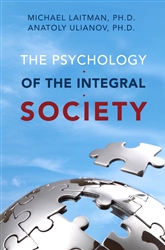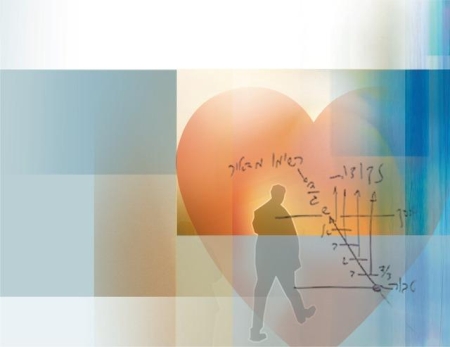
The level of egoism in humanity has kept growing, with each level driving us farther away from Nature (the Creator). In Kabbalah, distance is not measured in inches or yards; it’s measured in qualities. The Creator’s quality is wholeness, connectedness, and giving, but it is only possible to feel Him when we share His qualities. If I am self-centered, there is no way I can connect to anything as whole and altruistic as the Creator. It would be like trying to see another person when we are standing back to back.
Because we are standing back to back with the Creator and because we still want to control Him, clearly, the more we try, the more frustrated we become. Certainly, we cannot control something we can’t see or even feel. This desire can never be filled unless we make a U-turn, look in the opposite direction, and find Him.
Many people are already growing tired of technology’s broken promises of wealth, health, and most important, safe tomorrows. Too few people have attained all these today, and even they cannot be certain they will still have them tomorrow. But the benefit of this state is that it forces us to reexamine our direction and ask, “Is it possible we’ve been treading the wrong path all along?”
Particularly today, as we acknowledge the crisis and the impasse we are facing, we can openly admit that the path we’ve chosen is a dead-end street. Instead of compensating for our self-centered oppositeness from Nature by choosing technology, we should have changed our egoism to altruism, and consequently to unity with Nature.
In Kabbalah, the term used for this change is Tikkun (correction). To realize our oppositeness from the Creator means that we must acknowledge the split that occurred among us (human beings) five thousand years ago. This is called “the recognition of evil.” It is not easy, but it is the first step to true health and happiness.
The Global Crisis Has A Happy End
Over the past 5,000 years, each of the two factions that tore from Mesopotamia evolved into a civilization of many different peoples. Of the two primary groups, one became what we refer to as “Western civilization,” and the other became what we know as “Eastern civilization.”
The worsening clash between the two civilizations reflects the culmination of the process that began at the first division. Five thousand years ago, a single nation was divided because egoism grew and separated its members. Now it is time for this “nation”—humanity—to reunite and become a single nation once again. We are still at the breaking point that occurred all those years ago, but today we are much more aware of it.
According to the wisdom of Kabbalah, this culture clash and the resurfacing of mystical beliefs that were abundant in ancient Mesopotamia mark the beginning of humanity’s reconnection into a new civilization. Today, we are beginning to realize that we are all connected and that we must rebuild the state that existed prior to the shattering. By rebuilding into a united humanity, we will also rebuild our connection with Nature, with the Creator.
Egoism Is A Catch-22
During the time when mysticism thrived, the wisdom of Kabbalah was discovered and provided knowledge about the stage-by-stage growth of our egoism and what causes it. Kabbalists taught that everything that exists is made of a desire for self-fulfillment.
However, these desires cannot be fulfilled in their natural form, when they are self-centered. This is because when we satisfy a desire, we cancel it, and if we cancel a desire for something, we can no longer enjoy it.
For example, think of your favorite food. Now, imagine yourself in a fancy restaurant, comfortably seated at a table as the smiling waiter brings you a covered plate, places it in front of you, and removes the lid. Hmmm… that deliciously familiar scent! Enjoying yourself yet? Your body does; that’s why it releases digestive juices at the mere thought of this dish.
But the minute you start eating, the pleasure diminishes. The fuller you become, the less pleasure you derive from eating. Finally, when you’ve had your fill, you can no longer enjoy the food, and you stop eating. You don’t stop because you’re full, but because eating is no fun on a full stomach. This is the Catch-22 of egoism—if you have what you want, you no longer want it.
Therefore, because we cannot live without pleasure, we must go on searching for new and greater pleasures. We do that by developing new desires, which will also remain unfulfilled. It’s a vicious circle. Clearly, the more we want, the emptier we feel. And the emptier we feel, the more frustrated we become.
And because we are now at the most intense level of desire in our history, we cannot avoid the conclusion that today we are more dissatisfied than ever before, even though we clearly have more than our fathers and our forefathers had. The contrast between what we have, on the one hand, and our growing dissatisfaction, on the other hand, is the essence of the crisis we are experiencing today. The more egoistic we become, the emptier we feel, and the worse is the crisis.
The above text was taken from the book Kabbalah Revealed: A Guide To A More Peaceful Life by Dr. Michael Laitman with foreword by Prof. Ervin Laszlo. Also available as eBook (PDF, Kindle & ePub formats), and for free PDF download.







